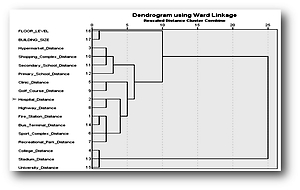Current issue
Online first
Archive
About the Journal
Aims and scope
Editorial Board
International Editorial Board
List of Reviewers
Abstracting and indexing
Ethical standards and procedures
REMV in Social Media
Contact
Instructions for Authors
Instructions for Authors
Manuscript formatting template
Title page
Highlights
Payments
‘Ghostwriting’ and ‘Guestauthorship’
Guidelines for Referees
Identifying Housing Submarkets in Johor Bahru and Kulai, Malaysia: A Data-Driven Method
1
Faculty of Technology Management and Business, Universiti Tun Hussein Onn Malaysia, Malaysia
Submission date: 2021-09-15
Final revision date: 2021-11-16
Acceptance date: 2021-12-05
Publication date: 2022-06-18
REMV; 2022;30(2):1-11
HIGHLIGHTS
- each home has its own distinct housing characteristics that can be used to establish housing submarkets in a given location
- information on housing submarkets provides insight into submarket housing preferences
- the identified housing preferences enable local governments, real estate developers and individual homeowners make important decisions and design market-appropriate plans
KEYWORDS
TOPICS
D49 - Market Structure and Pricing: OtherR30 - Real Estate Markets, Spatial Production Analysis, and Firm Location: General
ABSTRACT
Generally, housings within the same area tend to share similar structural and locational characteristics as well as having the same homebuyers’ preferences. This information provides insight on the existence of housing submarkets. Thus, this study aims to identify the existence of housing submarkets in Johor Bahru and Kulai, Malaysia through the principal component analysis and cluster analysis. A total of 29 housing attributes were involved in this study. The results from the principal component analysis have successfully identified four principal components that represent the basic facility, main infrastructure, less common facility and housing quality characteristics. On the other hand, the cluster analysis managed to identify the existence of four housing submarkets in Johor Bahru and Kulai, where three submarkets showed the characteristics of housing quality, whereas one submarket appeared to have the main infrastructure characteristics. The findings of this study provide valuable information on the existence of four housing submarkets in Johor Bahru and Kulai areas, which will benefit the city governments, real estate developers, mortgage lenders, non-profit organizations, as well as individual homeowners, in making critical choices and developing market-appropriate strategies.
ACKNOWLEDGEMENTS
This research was supported by the Ministry of Higher Education (MOHE) through the Fundamental Research Grant Scheme (FRGS/1/2019/SS08/UTHM/02/1). In addition, the authors would like to thank the Department of Town and Country Planning Johor (JPBDJ) and the Valuation and Property Services Department (JPPH) for providing the data used in this research.
We process personal data collected when visiting the website. The function of obtaining information about users and their behavior is carried out by voluntarily entered information in forms and saving cookies in end devices. Data, including cookies, are used to provide services, improve the user experience and to analyze the traffic in accordance with the Privacy policy. Data are also collected and processed by Google Analytics tool (more).
You can change cookies settings in your browser. Restricted use of cookies in the browser configuration may affect some functionalities of the website.
You can change cookies settings in your browser. Restricted use of cookies in the browser configuration may affect some functionalities of the website.



